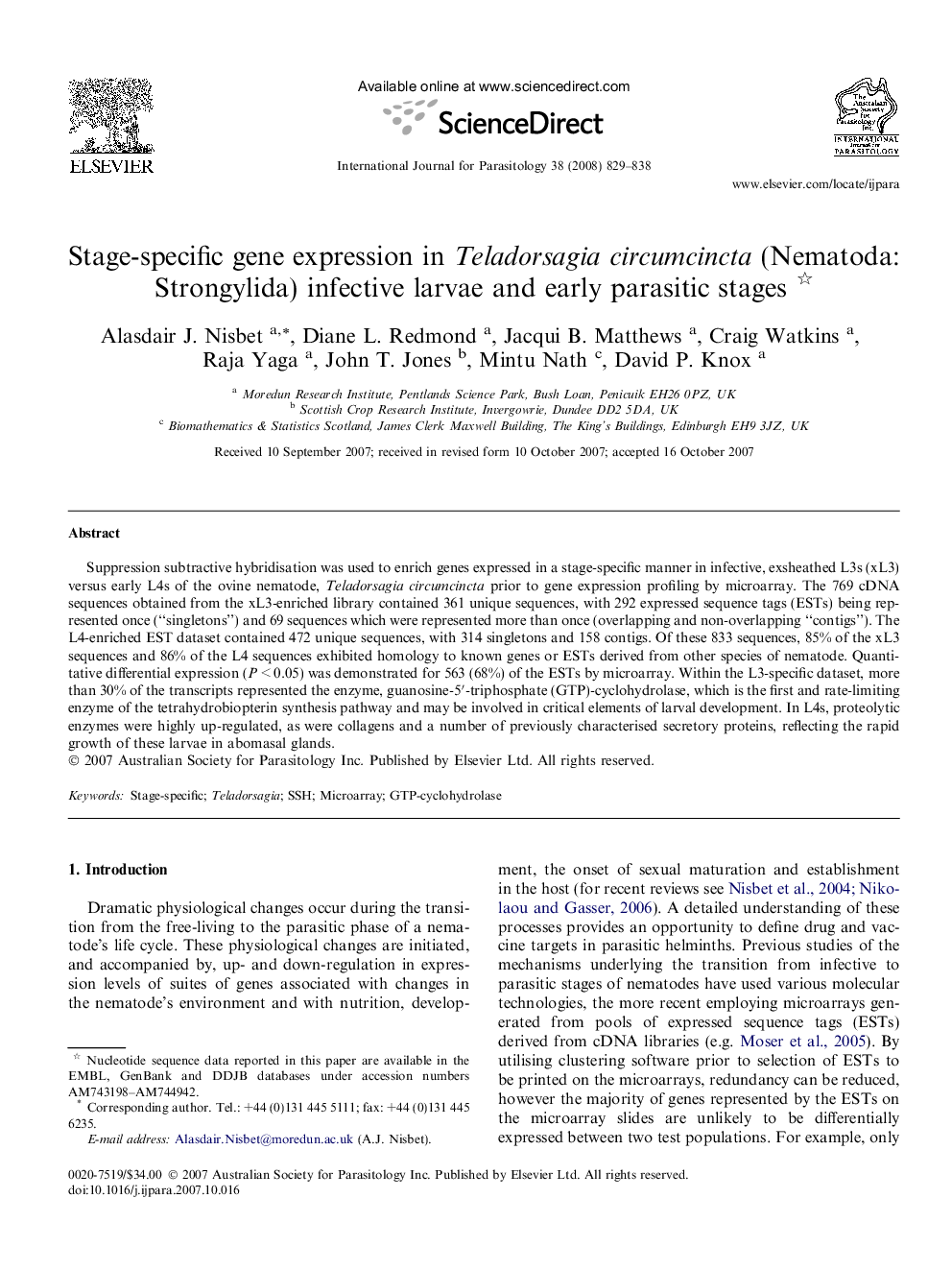| Article ID | Journal | Published Year | Pages | File Type |
|---|---|---|---|---|
| 2436697 | International Journal for Parasitology | 2008 | 10 Pages |
Suppression subtractive hybridisation was used to enrich genes expressed in a stage-specific manner in infective, exsheathed L3s (xL3) versus early L4s of the ovine nematode, Teladorsagia circumcincta prior to gene expression profiling by microarray. The 769 cDNA sequences obtained from the xL3-enriched library contained 361 unique sequences, with 292 expressed sequence tags (ESTs) being represented once (“singletons”) and 69 sequences which were represented more than once (overlapping and non-overlapping “contigs”). The L4-enriched EST dataset contained 472 unique sequences, with 314 singletons and 158 contigs. Of these 833 sequences, 85% of the xL3 sequences and 86% of the L4 sequences exhibited homology to known genes or ESTs derived from other species of nematode. Quantitative differential expression (P < 0.05) was demonstrated for 563 (68%) of the ESTs by microarray. Within the L3-specific dataset, more than 30% of the transcripts represented the enzyme, guanosine-5′-triphosphate (GTP)-cyclohydrolase, which is the first and rate-limiting enzyme of the tetrahydrobiopterin synthesis pathway and may be involved in critical elements of larval development. In L4s, proteolytic enzymes were highly up-regulated, as were collagens and a number of previously characterised secretory proteins, reflecting the rapid growth of these larvae in abomasal glands.
